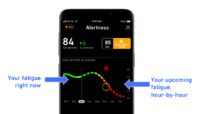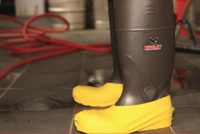Category: Special Topics in Safety Management
Safety is a process, and as such, needs to be managed. This section offers resources to create a viable safety program, sell it to senior management, train supervisors and employees in using it, and then track and report your progress. Look also for ways to advance your own skills in these areas, both for your current job, and those that follow.
Free Special Report: 50 Tips for More Effective Safety Training
It was the week before Thanksgiving 2014, and the Hardman family was on their way to a dream family vacation at Disney World in Orlando, when the family’s 16-year-old son, who was driving, briefly nodded off at the wheel. Six of the eight passengers were not wearing seat belts; all six were ejected from the […]
By itself, winter carries a heightened risk of fire, because it involves more of the things that create warmth and light—fireplaces, space heaters, candles, cozy blankets. During the holidays, even more light, heat, and potentially flammable decorations are added to that mix.
Yesterday in our series on holiday hazards, we talked about the ways workers can hurt themselves when they’re trying to get at something that’s out of reach. But falls from elevations are not the only hazard workers face during the holidays; they may also be at increased risk from falls on the same level.
Ah, the holidays! Twinkly lights, evergreen wreaths, chirpy music, family gatherings … and hazards that don’t apply to any other time of year. The EHS Daily Advisor’s upcoming series on holiday hazards will help you remind your workers of the hazards their holiday activities can present, both in and out of the workplace. The best […]
The 2018–2019 flu season is fully upon us and, according the Centers for Disease Control and Prevention (CDC), may continue well beyond the beginning of spring 2019. February is typically the peak month (by a large margin) in the flu season. This can be a high-risk period for workers in healthcare facilities where sick people […]
Do you deck the halls in your workplace? Whether you do it for business-related purposes—decorating to draw in customers looking for holiday items—or just to bring some seasonal cheer into the workplace, make sure that your holiday decorations don’t invite tragedy.
In August 2018, OSHA issued a “working paper” that comprised the Agency’s first assessment of the “societal benefits” of its On-Site Consultation (OSC) program. The benefits come in multiple forms—workplace hazards identified, injuries avoided, and monetary benefits, including worker income not lost and costs avoided for employers and workers’ compensation.
Let’s face it: your employees are exhausted. According to the Centers for Disease Control and Prevention, more than one-third of Americans don’t get enough sleep. Fatigue is officially a health problem. Tired employees are more prone to absenteeism and are more likely to be involved in workplace incidents or near misses. In fact, 13% of […]
As part of its Temporary Worker Initiative, OSHA has provided guidance on the responsibilities of temporary-worker staffing agencies and host employers to protect temporary workers under the federal Control of Hazardous Energy (Lockout/Tagout) standard (29 CFR 1910.147).
Question: Can we require slip resistant and safety toe shoes and have the employee pay for them if they are allowed to take them home? If we do not allow them to take the shoes home do we have to pay for them?










